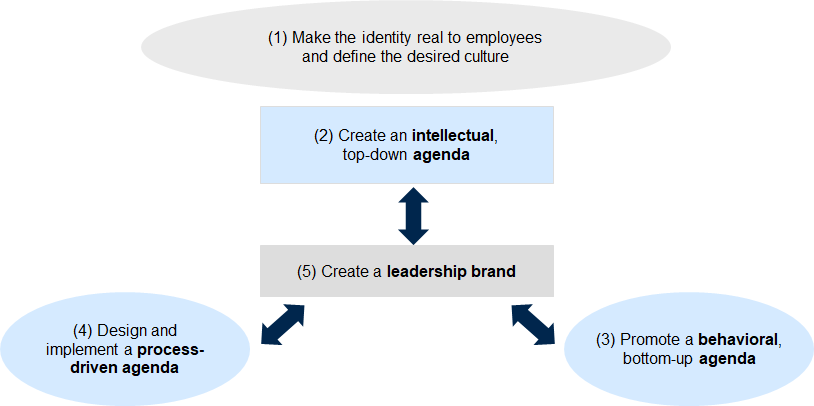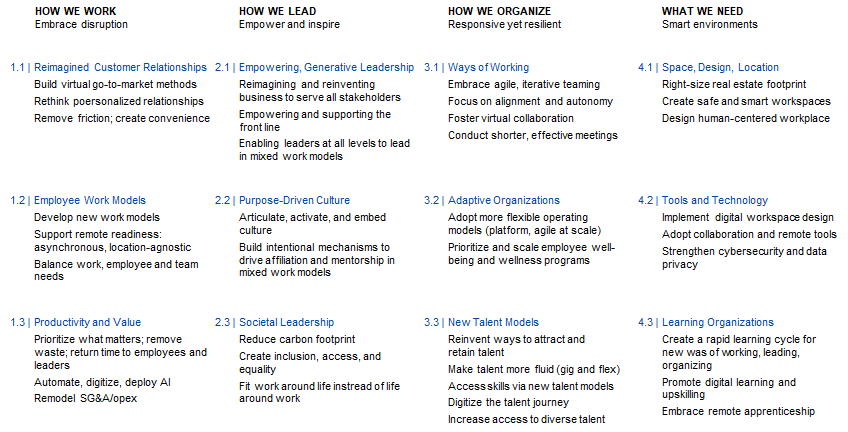Culture presents a complex challenge for organizations, one that has only been exacerbated by the pandemic and the shift to hybrid working.
Corporate culture is experiencing a turning point that is redefining the relationship between employers and employees. The latter are demanding a better work-life balance, the freedom to work where and when they want, and more support and empathy from their employer. The LinkedIn study “Global Talent Trends 2022” provides detailed insights on this.
The Gartner 2021 EVP Benchmarks find the following:
- Flexibility: 52% of employees say flexible work policies will affect the decisions to stay at their organizations.
- Shared Purpose: 53% of employees want their organizations to take actions on issues they care about.
- Well-Being: 70% of companies have introduced new well-being benefits or increased the amount of existing ones.
- Person-First Experience: 82% of employees say it´s important for their organization to see them as a person, not just an employee.
Human-centered corporate culture
Many employers are responding to these developments and cultivating a human-centered culture where work is based on the lives of employees. This requires a new mindset! Dave Ulrich calls this an “outside-in” view of culture, because in this, culture is evaluated and shaped from the perspective of stakeholders. Such a culture is implemented in five steps:

Consequently, cultural ideas and messages flow from the bottom up (3), behaviors and actions from the top down (2). Processes, such as hiring, training and development, and compensation of employees, should support the desired culture (4). Leadership competencies should be aligned with promises to stakeholders to create a leadership brand (5).
Flexibility and well-being
A human-centered culture must provide a connection to the purpose of the organization so that employees can see their work as meaningful and themselves as an important part of the organization. Here are some examples:
- Airbnb: “Provide hospitality, create a sense of belonging to wherever you go in the world.”
- dm-drogerie markt: “Create a social organism in which people can develop their potential and contribute to society.”
- Phoenix Contact: “With passion for technology and innovation, we create a sustainable world together.”
In this section, I focus on two other important criteria: Flexibility and well-being.
Flexibility
According to the LinkedIn study mentioned at the beginning of this blogpost, employees who think their company does a good job in terms of time and location flexibility are 2.6 times more likely to enjoy working for their company. They are also 2.1 times more likely to recommend others to work at their employer.
Key practice lessons are:
- Focus on results, not work hours.
- Help employees set boundaries.
- Find the right mix of on-site meetings and virtual meetings.
- Provide flex-time arrangements, such as a 4-day work week, to employees with direct customer contact.
Well-being
Employees who feel well cared for at work with regard to their mental health are 3.2 times more likely to be satisfied with their job. They are also 3.7 times more likely to recommend their company as a place to work.
Although I personally believe that employees also have a personal responsibility here, more and more employers also see it as their duty to focus on the physical and mental well-being of their employees.
Key practical lessons are:
- Train managers to be empathetic leaders.
- Make mental health services easily accessible.
- Use people analytics to identify problems.
- Turn your employees into mental health allies.
Leadership
When leaders think and act in accordance with the expectations of customers and employees, their work reinforces the desired culture. A group of BCG authors has developed an integrated approach to this based on four critical areas: how we work, how we lead, how we organize, and what we need.
Conclusion
The answer to this article’s question about the need for a new cultural agenda can only be YES:
- Don’t just talk about culture ideals, but connect them to value for employees and customers so that culture impacts the workforce and the marketplace.
- Evaluate culture not with rhetoric, but with results from employee surveys, strategic analyses, customer reviews, etc.
- Derive intellectual, behavioral, and process activities from these and institutionalize a culture of change.
Specific tasks arise for CHROs with regard to human-centered leadership:
- Understand how the concept of human-centered leadership and its associated behaviors align with your organization’s current model of leadership competencies and what adjustments are needed.
- Assess your own strengths and areas for development as a human-centered leader and identify opportunities to demonstrate authenticity, empathy, and adaptability to employees.
- Adapt competency-based organization and leadership development programs to develop human-centered qualities while maintaining focus on business needs and update succession plans.
Companies that build a human-centered culture have the opportunity to attract employees in ways that may not have been possible in the past. To do this, employers should also refine their employer branding messages.



Leave A Comment